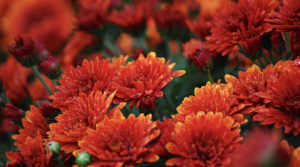Come fall, Mother Nature gets busy shutting down your lawn and garden. You can work alongside her, chipping in with tasks that will settle in your flora for a long winter’s nap and bring the green back in all its glory come spring.
This checklist will guide you through the steps of preparing your lawn and garden for the cooler months. We also made it an easy download for you to print and use.

How to prepare your lawn for winter
The last heat of summer may have left your lawn looking more like a desert than a lush golf course. No matter how it looks, your lawn is hard at work during the fall, stocking up on nutrients and energy to get through winter and prepare for spring. Here’s how you can help:
Cut grass short
Gradually lower your mower height as the mowing season winds down, finishing off with an excellent, close cut. A shorter blade height helps prevent snow mold or fungus from developing.
Fertilize
Grass growth may be slowing, but the roots are as busy as ever. Spread a good fertilizer to help roots grow deeper and start spring strong.
Eliminate weeds
Like grass roots, weed roots are best targeted in the fall for your desired spring lawn. Apply weed killer before the snow falls to help keep the weeds from returning come spring.
Seed bare spots
Fall’s cooler temperatures are perfect for nurturing new grass. If you’ve treated for weeds, wait three to four weeks before planting seed.
Aerate
Pulling out plugs of soil with a lawn aerator helps a compacted lawn loosen up, letting grass roots spread out and grow deeper and stronger.
Remove leaves
Get those leaves raked into a pile worthy of hours of play before you bag them up or spread them for composting. You also can recycle their goodness by mowing and mulching them.

How to prepare your garden for winter
Fruit, vegetable and flower production should be winding down unless you plant cool-season crops. But that doesn’t mean your work is done! Help your garden get its beauty rest so that when it wakes up, it looks its best.
Divide and plant
Fall is a great time to divide spring- and summer-blooming perennials. Use a sharp spade to break them into smaller clumps that you can plant in new spots.
Fall’s cooler temperatures are ideal for planting or transplanting trees and shrubs. Pansies, mums and ornamental kale can also flourish in the cooler temperatures, giving you a burst of color as the rest of the outdoor world turns brown. Don’t forget to plant your spring-flowering bulbs, such as tulips, daffodils and hyacinths.
Keep watering
Send your perennials, trees and flowering shrubs to bed with a good drink to help them get through the dry winter.
Dig up
Tender bulbs like canna, dahlia and gladiolus don’t like the winter any more than Florida snowbirds. Dig them up and store them in a cool, dry spot such as a basement. And don’t forget to harvest your root crops, like carrots, potatoes, turnips and beets, before the ground freezes.
Cut back
You can help mums and perennials survive winter by cutting them back after a few hard frosts. When the foliage has died, cut away any diseased parts and trim the stems to 3–4 inches. Pull dead annuals and vegetables and add them to your compost pile. Be careful to toss diseased plants and weeds in the trash so they don’t contaminate your compost.
Pull weeds
While weeds fade away with cooler temperatures, pulling them in the fall eliminates reseeding and spreading when they return in the spring.
Till the soil
Gently turn the soil to rouse grubs of Japanese beetles or other insects that plan to burrow underground so they don’t become a problem in spring.
Feed and cover
Feed the soil all winter by digging compost in (shred and use those leaves you’ve raked!). Tuck the garden, beds and overwintering plants in with a blanket of mulch (those leaves come in handy again!).
Want to move your gardening inside? Here’s a starter guide on container gardening.





